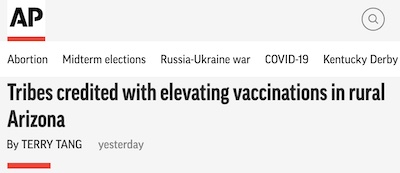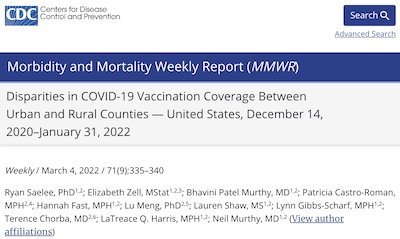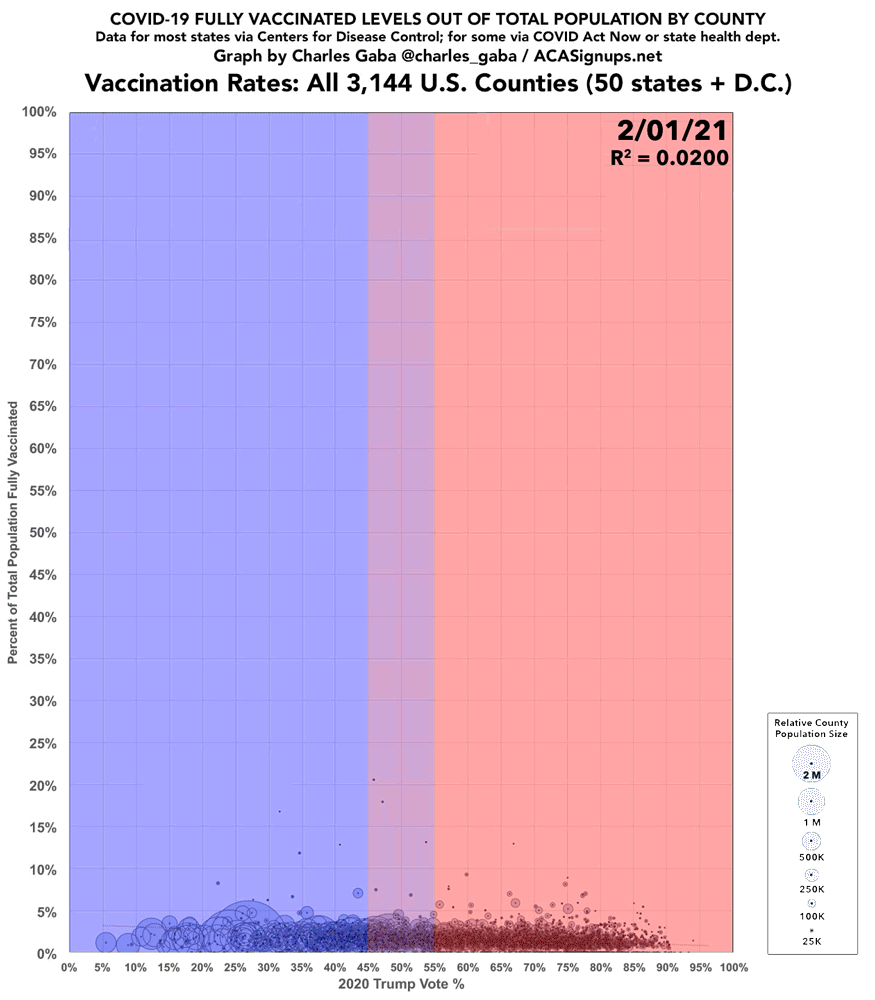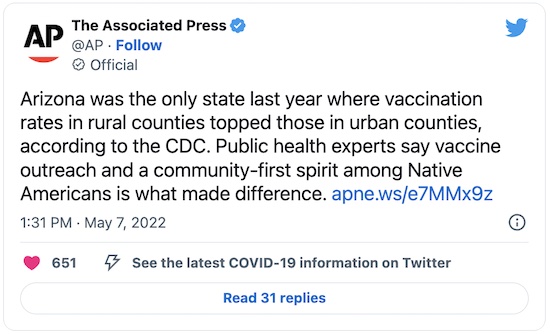The Highest-Vaccination Ethnic Group in the US, Redux
Tagged:COVID
/
MathInTheNews
/
PharmaAndBiotech
/
Politics
/
R
/
Statistics
Remember last year when we noted the highest-vaccination ethnic group in the US? They’re still winning, and it shows in the statistics.
COVID-19 Vaccination and Native Americans
Remember last July, when we noted with approval that the highest-vaccination ethnic group in the US was Native Americans, and how they did so in sensible culturally attuned ways, and how they were generous with vaccines to their neighbors and friends? [1]
(Yeah, I know you probably don’t remember. It’s ok: we’ve all had other things to think about since then.)
Via Eric Topol and the Associated Press comes word that they’re still winners:
 He refers us to an article by Terry Tang at AP News. [2]
Very interestingly, the article points out that not only was there abundant community
spirit to encourage vaccinations, but that it was done in alliance between Navajo and Hopi
peoples together. They have not always had frictionless relations in the past, so it’s
just beautiful to see that kind of solidarity.
He refers us to an article by Terry Tang at AP News. [2]
Very interestingly, the article points out that not only was there abundant community
spirit to encourage vaccinations, but that it was done in alliance between Navajo and Hopi
peoples together. They have not always had frictionless relations in the past, so it’s
just beautiful to see that kind of solidarity.
They pushed for vaccination as “an act of selflessness” and cultural preservation, in which all community members protect each other. Combine that with consistent, easily understood leadership communications (sometimes in native languages) and you’ve got a working strategy.
 Arizona is, as a result, the only US state where rural vaccinations outpaced urban. At
least partial vaccination rates 2020-Dec-14 through 2022-Jan-31 were 86.1% in rural counties vs
69.3% in urban counties in Arizona. For comparison, the US national figures are the other
way ‘round: 58.5% rural vs 75.4% urban according to the CDC’s
MMWR. [3]
Arizona is, as a result, the only US state where rural vaccinations outpaced urban. At
least partial vaccination rates 2020-Dec-14 through 2022-Jan-31 were 86.1% in rural counties vs
69.3% in urban counties in Arizona. For comparison, the US national figures are the other
way ‘round: 58.5% rural vs 75.4% urban according to the CDC’s
MMWR. [3]
But is it REAL?!
We can test statistically whether the urban/rural vaccination counts are different between Arizona and the US, if we know the sizes of the urban/rural populations.
- Statista Research Service says the US had 272.91 million people in urban areas and 57.23 million in rural areas. [4]
- According to the US Census Bureau, Arizona has a population of 7,276,316 (2021-Jul-01
estimate). [5] According to 2 other sources, both
estimating for 2010, the population of Arizona is 89.8% urban and 10.2%
rural. [6] [7] (It’s probably
even more urban by now, almost 12 years later, but let’s just go with the hard data
for 2010. Given the proportions in the above table, that means there are in Arizona overall:
- 0.898 * 7,276,316 = 6,534,132 AZ urban residents
- 0.102 * 7,276,316 = 742,184 AZ rural residents
| Urban Popln | Urban % Vax | Rural Popln | Rural % Vax | |||||
|---|---|---|---|---|---|---|---|---|
| Arizona | 6,534,132 | 69.3% | 742,184 | 86.1% | ||||
| National | 272,910,000 | 75.4% | 57,230,000 | 58.5% |
Now we can ask 4 questions:
- Q: In the US as a whole, do the urban/rural areas differ in vaccination rate
in a statistically significant way?
A: Yes, very significant. It’s real: the US urban population is more highly vaccinated than the US rural population.> usUrbanPopln <- 272910000 > usRuralPopln <- 57230000 > usUrbanRural <- matrix(round(c(0.754 * usUrbanPopln, 0.585 * usRuralPopln, (1 - 0.754) * usUrbanPopln, (1 - 0.585) * usRuralPopln)), byrow = TRUE, nrow = 2, ncol = 2, dimnames = list(c("Vax", "NonVax"), c("Urban", "Rural"))) > usUrbanRural Urban Rural Vax 205774140 33479550 NonVax 67135860 23750450 > fisher.test(usUrbanRural) # Takes forever, due to large numbers Fisher's Exact Test for Count Data data: usUrbanRural p-value < 2.2e-16 alternative hypothesis: true odds ratio is not equal to 1 95 percent confidence interval: 2.173049 2.175559 sample estimates: odds ratio 2.174356 - Q: In Arizona, is urban/rural vaccination rate difference
statistically significant?
A: Yes, very significant. It’s real. Also note the odds ratio goes the other way, i.e., less than 1 here but greater than 1 for the US as a whole. The urban/rural vax rates differ in both the US and Arizona, but in the opposite direction, favoring the rural population in Arizona.> azUrbanPopln <- 6534132 > azRuralPopln <- 742184 > azUrbanRural <- matrix(round(c(0.693 * azUrbanPopln, 0.861 * azRuralPopln, (1 - 0.693) * azUrbanPopln, (1 - 0.861) * azRuralPopln)), byrow = TRUE, nrow = 2, ncol = 2, dimnames = list(c("Vax", "NonVax"), c("Urban", "Rural"))) > azUrbanRural Urban Rural Vax 4528153 639020 NonVax 2005979 103164 > fisher.test(azUrbanRural) Fisher's Exact Test for Count Data data: azUrbanRural p-value < 2.2e-16 alternative hypothesis: true odds ratio is not equal to 1 95 percent confidence interval: 0.3619715 0.3668886 sample estimates: odds ratio 0.3644273 - Q: In urban areas, does the US differ from Arizona by vaccination rate in a
statistically significant way?
A: Yes, very significant. It’s real: the US urban population is a little more vaccinated than the Arizona urban population.> urbanUSAZ <- matrix(round(c(0.754 * usUrbanPopln, 0.693 * azUrbanPopln, (1 - 0.754) * usUrbanPopln, (1 - 0.693) * azUrbanPopln)), byrow = TRUE, nrow = 2, ncol = 2, dimnames = list(c("Vax", "NonVax"), c("UrbanUS", "UrbanAZ"))) > urbanUSAZ UrbanUS UrbanAZ Vax 205774140 4528153 NonVax 67135860 2005979 > fisher.test(urbanUSAZ) Fisher's Exact Test for Count Data data: urbanUSAZ p-value < 2.2e-16 alternative hypothesis: true odds ratio is not equal to 1 95 percent confidence interval: 1.355549 1.360130 sample estimates: odds ratio 1.357818 - Q: In rural areas, does the US differ from Arizona by vaccination rate in a
statistically significant way?
A: Yes, very significant. It’s real. Also note the odds ratio goes the other way, i.e., less than 1 here but greater than 1 for the urban populations. The US/AZ vax rates differ in both cases, but in the opposite way, favoring the Arizona rural population.> ruralUSAZ <- matrix(round(c(0.585 * usRuralPopln, 0.861 * azRuralPopln, (1 - 0.585) * usRuralPopln, (1 - 0.861) * azRuralPopln)), byrow = TRUE, nrow = 2, ncol = 2, dimnames = list(c("Vax", "NonVax"), c("RuralUS", "RuralAZ"))) > ruralUSAZ RuralUS RuralAZ Vax 33479550 639020 NonVax 23750450 103164 > fisher.test(ruralUSAZ) Fisher's Exact Test for Count Data data: ruralUSAZ p-value < 2.2e-16 alternative hypothesis: true odds ratio is not equal to 1 95 percent confidence interval: 0.2260658 0.2291117 sample estimates: odds ratio 0.2275749
So the following effects are real:
- In the US as a whole, urban areas are more vaccinated than rural areas.
- In Arizona, the opposite is true: rural areas are more vaccinated than urban.
- The main difference in Arizona rural vs US rural is the large influence of Navajo and Hopi tribal policies.
One more bit of weirditude
Another oddity: Santa Cruz county, which is rural but has little Native American population, had a vaccination rate of 146%! This is because it borders Mexico, and lots of Mexicans, sensible folk that they are, crossed the border to get vaccinated but were not counted as part of population.
It’s through this kind of weird junk that you know the data are real.
County-level confirmation of US rural vaccine resistance (mostly)
Interestingly, you can see the US national urban/rural divide in Charles Gaba’s data on vaccination and Trump voting at the county level. [8] Last February, we wrote about his result as Reason #4 to be pessimistic:

The obvious point is the blue-vs-red slope, indicating Republican vaccine refusal. But more to the point today, consider the radius of each of the circles: it’s proportional to the county population.
- Note the large blue circles on the left, indicating largely Democratic urban counties with high vaccine uptake.
- Note the tiny red circles on the right, indicating largely Republican rural counties with low vaccine uptake.
That’s the national flow, and it’s stupid. The Arizona Navajo and Hopi tribes swam upstream against that flow, and they’re brilliant.
The Weekend Conclusion
We should learn from the practical community spirit of our Native American brothers and sisters. It’s not only the right thing to do, it just plain makes practical sense.
Notes & References
1: Weekend Editor, “The Highest-Vaccination Ethnic Group in the US”, Some Weekend Reading blog, 2021-Jul-16.↩
2: T Tang, “Tribes credited with elevating vaccinations in rural Arizona”, Associated Press News, 2022-May-07. ↩
3: R Saelee, et al., “Disparities in COVID-19 Vaccination Coverage Between Urban and Rural Counties — United States, December 14, 2020–January 31, 2022”, CDC Morbidity and Mortality Weekly Report 71:9, 335-340, 2022-Mar-04. ↩
4: Statista Research Department, “Size of the urban and rural population of the United States from 1960 to 2020”, Statista Research Service, retrieved 2022-May-08. ↩
5: US Census Bureau Staff, “US Census QuickFacts for Arizona”, US Census Bureau, retrieved 2022-May-08. ↩
6: Iowa Community Indicators Program Staff, “Urban Percentage of the Population for States, Historical”, Iowa State University Community Indicators Program, retrieved 2022-May-08. NB: 2010 numbers sourced from the US Census. ↩
7: ASU Morrison Institute for Public Policy Staff, “Revisiting the Urban-Rural Relationship in Arizona”, Arizona State University Morrison Institute for Public Policy, 2019-Nov, retrived 2020-May-08. NB: Also an estimate dated to 2010. ↩
8: C Gaba, “Updated: A Full Year Of U.S. COVID Vaccinations By Partisan Lean…Animated”, ACA Signups, 2022-Feb-02. ↩


Gestae Commentaria
Comments for this post are closed pending repair of the comment system, but the Email/Twitter/Mastodon icons at page-top always work.